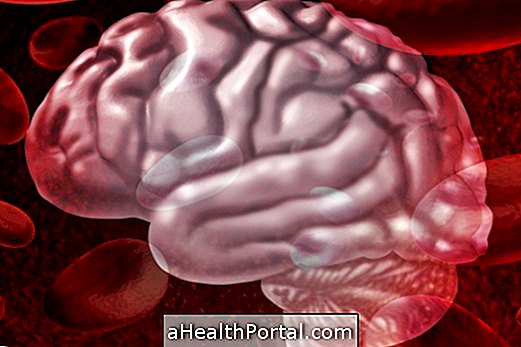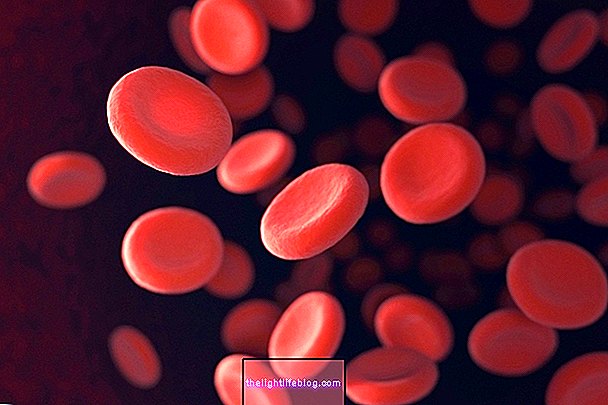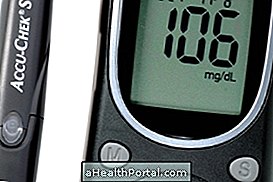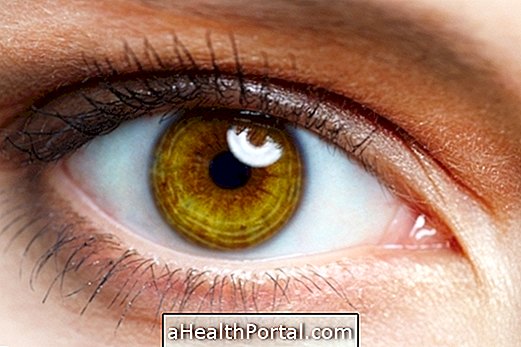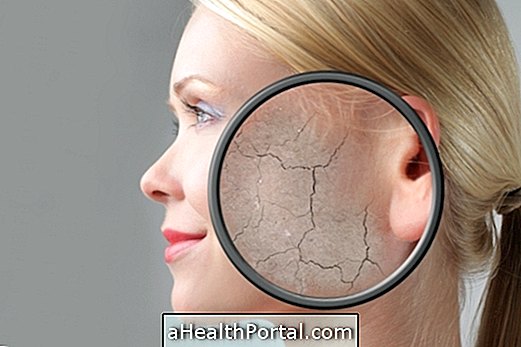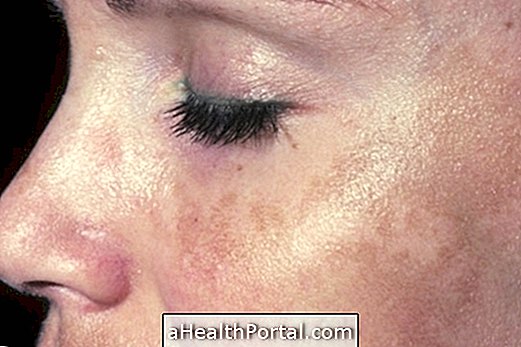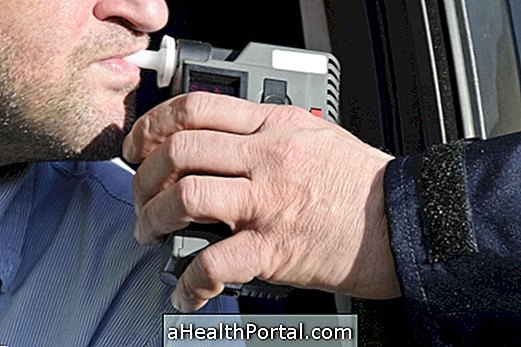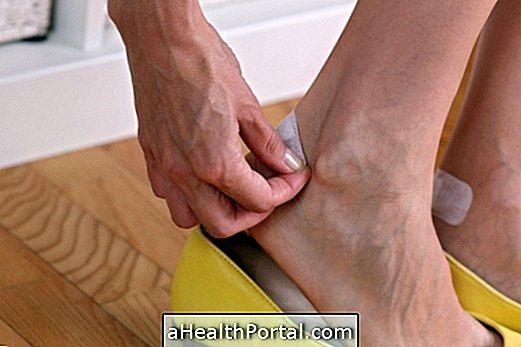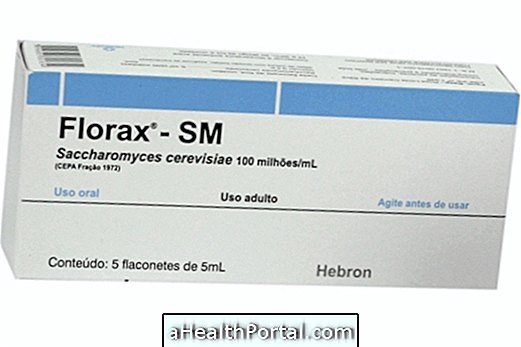Sickle cell anemia is a disease characterized by a change in the shape of the red blood cells due to the mutation in one of the hemoglobin constituent chains, a decrease in the oxygen binding capacity and possible obstruction of the blood vessels due to the altered shape, which can lead to generalized pain, weakness and apathy.
In people diagnosed with sickle cell anemia, part of the red blood cells are not round, but in the form of a sickle or half-moon, with greater difficulty in passing through the veins and transporting oxygen to the tissues.
The symptoms of this type of anemia can be controlled with the use of medicines that have to be taken during the whole life to reduce the risk of complications, nevertheless the cure only happens through the transplant of bone marrow.
The diagnosis of sickle cell anemia is made in the newborn through the foot test, being more common in African descendants, but due to miscegenation in Brazil, Caucasian and brown people may also be affected. In addition to the foot test, this type of anemia can be diagnosed by hemoglobin electrophoresis of a blood sample, in which the presence of an abnormal hemoglobin type characteristic of sickle cell anemia, HbS, can be detected. Learn how to interpret hemoglobin electrophoresis.
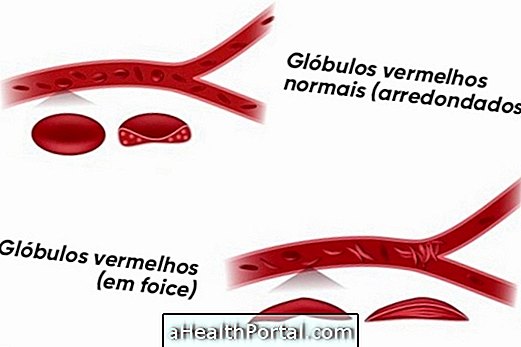
Main symptoms
In addition to the common symptoms of any other type of anemia, such as tiredness, pallor and sleep, sickle cell anemia produces other characteristic symptoms, such as:
- Anemia, because the red blood cells, due to their scythe-like appearance, "die" faster, causing a decrease in the transport of oxygen and nutrients;
- Tiredness and pallor because of the reduction of oxygen and nutrients in the brain and the rest of the body;
- Pain in the bones, muscles and joints because the oxygen arrives in smaller quantity;
- Hands and feet swollen, as blood has greater difficulty reaching the extremities;
- Frequent infections because red blood cells can damage the spleen, which helps fight infections;
- Growth retardation and delayed puberty, as the red blood cells of sickle cell anemia provide less oxygen and nutrients for the body to grow and develop;
- Yellowish eyes and skin due to the fact that the red blood cells "die" more quickly and, therefore, the pigment bilirubin accumulates in the body causing the yellowish color in the skin and eyes
These symptoms usually appear after 4 months of age.
What are the causes
The causes of sickle cell anemia are genetic, that is, born with the child and passed from father to child. This means that whenever a person is diagnosed with the disease, they have the SS gene (or hemoglobin SS) that they inherited from their mother and father. Although the parents may appear healthy, if the father and the mother have the AS (or hemoglobin AS) gene, which is indicative of the disease carrier, also called a sickle cell trait, there is a chance the child has the disease (25% chance) or be a carrier (50% chance) of the disease.
How is the treatment done?
Treatment for sickle cell anemia is done with the use of medicines and in some cases blood transfusion may be necessary.
The medicines used are mainly Penicillin in children from 2 months to 5 years of age, to avoid the appearance of complications such as pneumonia, for example. In addition, analgesic and anti-inflammatory drugs may also be used to relieve pain during a seizure and even use an oxygen mask to increase the amount of oxygen in the blood and to facilitate breathing.
Sickle cell anemia treatment should be performed for a lifetime because these patients may have frequent infections. Fever can indicate infection, so if a person with sickle cell disease develops a fever, they should go to the doctor immediately because they can develop sepsis in as little as 24 hours and can be fatal. Drugs to lower fever should not be used without medical knowledge.
In addition, bone marrow transplantation is also a form of treatment, indicated for some severe cases and selected by the doctor, and may cure the disease, however it presents some risks, such as the use of drugs that reduce immunity. Learn how bone marrow transplantation is done and possible risks.

Possible Complications
The complications that can affect patients with sickle cell disease can be:
- Inflammation of the joints of the hands and feet that makes them swollen and very sore and deformed;
- Increased risk of infections due to spleen involvement, which will not filter the blood properly, thus allowing the presence of viruses and bacteria in the body;
- Increased urinary frequency, it is common for urine to be darker and the child to pee in bed until adolescence;
- Leg wounds that are difficult to heal and need dressings twice a day;
- Liver involvement that manifests itself through yellowing of the eyes and skin, but not of hepatitis;
- Gall stones;
- Decreased vision, scars, blemishes and stretch marks in the eyes, in some cases can lead to blindness;
- Stroke because of the difficulty of the blood in irrigating the brain.
Blood transfusions may also be part of the treatment to increase the number of red blood cells in the circulation, with only bone marrow transplantation offering the only potential cure for sickle cell anemia, but it may be difficult to find a donor.
How To Diagnose Sickle Cell Anemia
The diagnosis of sickle cell anemia is usually made through the test of the foot in the first days of the baby's life. This test is capable of doing a test called hemoglobin electrophoresis, which verifies the presence of hemoglobin S and its concentration. This is because if it is verified that the person has only one S gene, that is, hemoglobin of type AS, it means that he is a carrier of the sickle cell gene and is classified as a sickle cell trait. In these cases, the person may not have symptoms but should be followed up with routine laboratory tests.
When a person is diagnosed with HbSS, it means that the person has sickle cell anemia and should be treated according to medical advice.
In addition to the hemoglobin electrophoresis, the diagnosis of this type of anemia can be made by means of the bilirubin dosage associated with the hemogram in people who did not perform the test of the foot at birth, being able to be observed the presence of sickle-shaped red blood cells, presence of reticulocytes, basophilic dotted and hemoglobin value below the reference normal value, usually between 6 and 9.5 g / dL.

